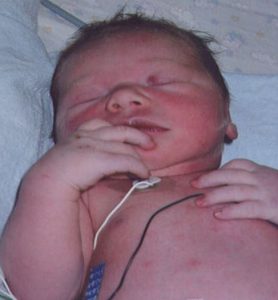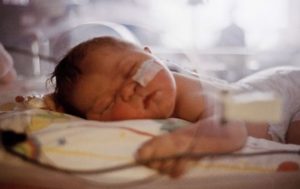Brian’s Story
Case Study Downloads
- Meet Brian (PPT)
- Brian’s Story (Single Slide) (PPT)
- Brian’s Story (DOCX)
- Teaching Notes (In Progress)
Applicable Courses
- Health Promotion & Active Living
- Social Determinants of Health
- Anatomy & Physiology
- Pathophysiology
- Health Research
- Mental Health & Disabilities
Brian’s Story
Brian was born in 1989 to affluent parents, Hugh and Gladys, who were in their early forties. Brian also had an older brother, Paul, who was away at boarding school when he was born.
When Gladys found out she was pregnant in her forties, her doctor suggested that Gladys be tested for Down syndrome. Gladys refused to have an amniocentesis done. Brian was diagnosed with Trisomy 21, one of the three types of Down syndrome. The diagnosis was suspected based on Brian’s physical appearance at birth, and confirmed by analysis of his chromosomes.
Gladys and Hugh were devastated by the news that their child was “less than perfect”. At first, they believed that a child with Down syndrome would require too much time and care for their lifestyle. And what would their friends and business associates think? They could not possibly bring this child home. Their view evolved and changed after reading about Down syndrome, learning the benefits of therapies like early intervention, and long discussions with peer groups (e.g. other parents of children with Down syndrome).
 Brian had difficulty breathing and the physician noticed Brian had blue-tinged skin, and a heart murmur (an abnormal whooshing sound caused by turbulent blood flow). Several tests were ordered:
Brian had difficulty breathing and the physician noticed Brian had blue-tinged skin, and a heart murmur (an abnormal whooshing sound caused by turbulent blood flow). Several tests were ordered:
- Echocardiogram
- Electrocardiogram
- Chest x-ray
- Oxygen level measurement
- Cardiac catheterization
Brian was diagnosed with Tetralogy of Fallot, a rare condition caused by a combination of four defects that are present at birth (congenital). These defects cause oxygen-poor blood to flow out of the heart and to the rest of the body.
Tetralogy of Fallot occurs during fetal growth, when the baby’s heart is developing. While factors such as poor maternal nutrition, viral illness, or genetic disorders might increase the risk of this condition, in most cases the cause of Tetralogy of Fallot is unknown.
The lungs of children with Down syndrome do not develop as fully as they do in the general population. Consequently, the growth of blood vessels throughout the lungs is limited. The narrowed arteries of the lungs hold potential for lasting consequences due to the increased pressure and flow of blood through the lungs.
Treatment
Surgery is the only effective treatment for Tetralogy of Fallot. Brian was two weeks old when he required temporary surgery due to his underdeveloped pulmonary arteries (hypoplastic). A bypass (shunt) was created between a large artery that branches off from the aorta and the pulmonary artery.
After six months, the cardiologist deemed Brian strong enough to undergo ‘intracardiac repair’. This is an open-heart surgery that involves several repairs:
- Removal of the shunt
- Patch over the ventricular septal defect to close the hole between the ventricles
- Repair or replace the narrowed pulmonary valve and widens the pulmonary arteries to increase blood flow to the lungs
The surgery was a success and Brian was eventually discharged home. He had around-the-clock care which included:
- Nursing
- Physiotherapist
- Occupational therapist
- Play workers
- Respiratory therapist
- Tutor
Brian required regular medical follow-up to maintain good health:
- Routine follow-up care – regular check-ups with a cardiologist, routine exams with his primary physician, prescription medications, routine dental care
- Heart-healthy lifestyle – heart-healthy eating, physical activity, maintaining healthy weight
- Emotional health – may feel isolation, sadness, and frustration
Growing up, Brian’s only interactions were with the “hired help”. As a pre-teen and teen, he formed strong bonds with his workers and struggled with changes in staff and routine. This led to frustration and anger.
Case Key Words
- Cardiovascular-circulation
- Cardiovascular-heart
- Down Syndrome
- Fetal Development
- Genetic Disorder
- Heart Surgery
- Intellectual Disability
- Physical and Developmental Problems



